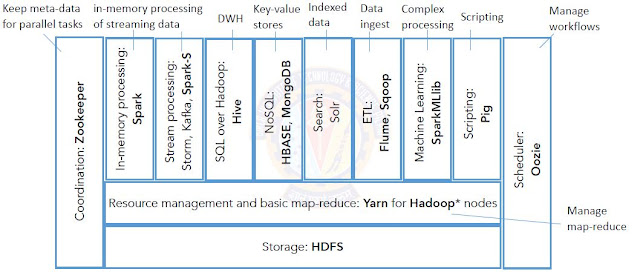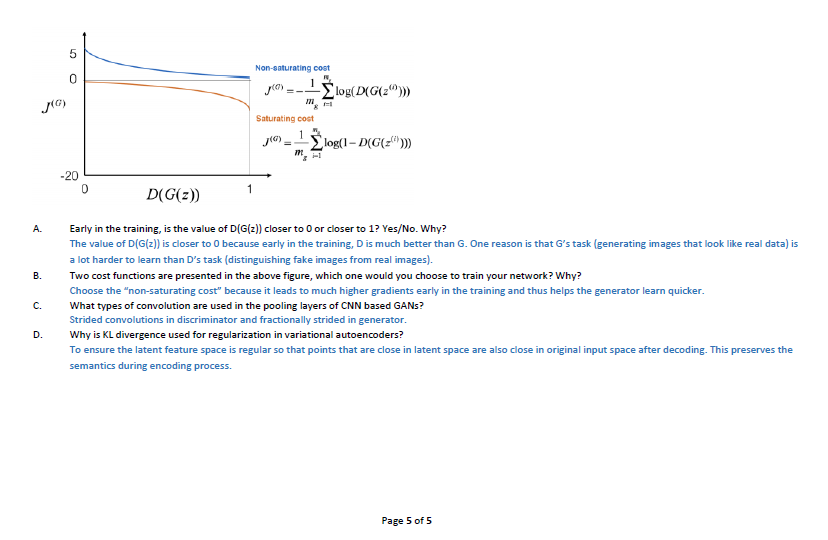All the messages below are just forwarded messages if some one feels hurt about it please add your comments we will remove the post.Host/author is not responsible for these posts
Monday, January 9, 2023
BITS-WILP-SPA-Regular 2020-Mid Semester
Thursday, January 5, 2023
Hadoop 2 - Architecture
MapReduce Programming Architecture and flow
Big Data Analytics Lifecycle
Mean Time Failure and other Formulas
Wednesday, January 4, 2023
Cache performance and Access time of memories
Hit + Miss = Total CPU ReferenceHit Ratio h = Hit / ( Hit + Miss )
Tavg = Average time to access memoryTavg = h * Tc + ( 1-h ) * ( Tm + Tc )
Big Data Architecture Challenges
Apache Technology Ecosystem
Big Data architecture style
Tf-IDf in information Retrieval
The tf-idf (term frequency-inverse document frequency) is a measure of the importance of a word in a document or a collection of documents. It is commonly used in information retrieval and natural language processing tasks.
The formula for calculating tf-idf is:
tf-idf = tf * idf
where:
tf (term frequency) is the frequency of the word in the document. It can be calculated as the number of times the word appears in the document divided by the total number of words in the document.
idf (inverse document frequency) is a measure of the rarity of the word. It can be calculated as the logarithm of the total number of documents divided by the number of documents that contain the word.
The resulting tf-idf score for a word reflects both the importance of the word in the specific document and its rarity in the collection of documents. Words that are common across all documents will have a lower tf-idf score, while words that are specific to a particular document and rare in the collection will have a higher tf-idf score.
----------------------------------
The tf-idf (term frequency-inverse document frequency) is a measure of the importance of a word in a document or a collection of documents. It is commonly used in information retrieval and natural language processing tasks.
The formula for calculating tf-idf is:
tf-idf = tf * idf
where:
tf (term frequency) is the frequency of the word in the document. It can be calculated as the number of times the word appears in the document divided by the total number of words in the document.
idf (inverse document frequency) is a measure of the rarity of the word. It can be calculated as the logarithm of the total number of documents divided by the number of documents that contain the word.
The resulting tf-idf score for a word reflects both the importance of the word in the specific document and its rarity in the collection of documents. Words that are common across all documents will have a lower tf-idf score, while words that are specific to a particular document and rare in the collection will have a higher tf-idf score.
----------------------
Jaccard Coefficient - Information Retrieval
Minimum Edit Distance - Information Retrieval
K-Gram Index (Bigram Indexes) - Information Retrieval
Tuesday, January 3, 2023
Permuterm index - Information Retrieval
Difference between Word/term/token and type
Issues with Information Retrieval
Information Retrieval vs Data Retrieval -- Tabular form
Monday, January 2, 2023
Deep Learning - Mid Semester - Makeup - DSECLZG524
Sunday, January 1, 2023
Information Retrieval -- DSECLZG537 - Mid Semester Question Paper - June 2021
Birla
Institute of Technology & Science, Pilani
Work-Integrated
Learning Programmes Division
June
2021
Mid-Semester
Test
(EC-1
Regular)
 |
Course No. : SS ZG537
Course Title : INFORMATION RETRIEVAL
Nature of Exam : Closed Book
Weightage : 30%
Note:
1. Please
follow all the Instructions to Candidates given on the cover page of the
answer book.
2. All
parts of a question should be answered consecutively. Each answer should start
from a fresh page.
3. Assumptions
made if any, should be stated clearly at the beginning of your answer.
Q1
– 2+5+3+5=15 Marks
A) Give an example of uncertainty and
vagueness issues in Information retrieval [2
Marks]
B) Explain the merge algorithm
for the query “Information Retrieval”? What is the best order for query
processing for the query “BITS AND Information AND Retrieval”? What Documents
will be returned as output from the 15 documents? [5 Marks]
Solution:
Merge Algorithm - Intersecting two posting lists : Algorithm
Output document - 11
C)
[3 Marks]
D)
Build inverted index using Blocked
sort-based Indexing for 50 million records. Explain the algorithm in
detail with respect to indexing 50 million records. [5 Marks]
Q2 – 5+5+5=15 Marks
A) Assume
a corpus of 10000 documents. The
following table gives the TF and DF values for the 3 terms in the corpus of
documents. Calculate the logarithmic TF-IDF values. [5
Marks]
|
Term |
Doc1 |
Doc2 |
Doc3 |
|
bits |
15 |
5 |
20 |
|
pilani |
2 |
20 |
0 |
|
mtech |
0 |
20 |
15 |
|
Term |
dft
|
|
bits |
2000 |
|
pilani |
1500 |
|
mtech |
500 |
B)
Classify the test document d6 into c1 or c2 using naïve bayes classifier. The documents
in the training set and the appropriate class label is given below. [5 Marks]
|
|
Docid |
Words in document |
c= c1 |
c= c2 |
|
Training
Set |
d1 |
positive |
Yes |
No |
|
|
d2 |
Very
positive |
Yes |
No |
|
|
d3 |
Positive
very positive |
Yes |
No |
|
|
d4 |
very
negative |
No |
Yes |
|
|
d5 |
negative
|
No |
Yes |
|
Test
Set |
d6 |
Negative
positive very positive |
? |
? |
C)
The search engine ranked results on 0-5 relevance scale: 2, 2, 3, 0, 5.
Calculate the NDCG metric for the same. [5
Marks]
























